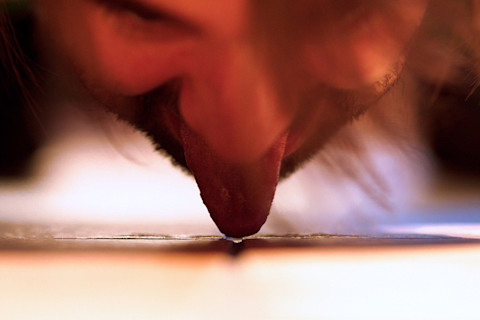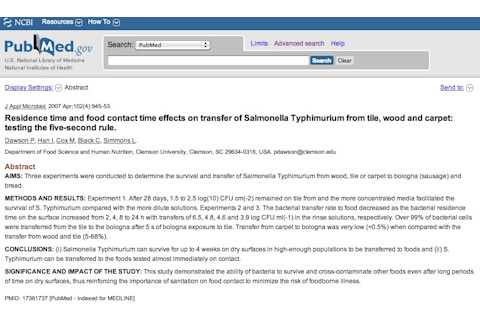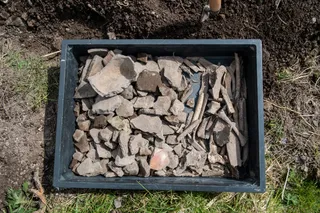"AIMS: Three experiments were conducted to determine the survival and transfer of Salmonella Typhimurium from wood, tile or carpet to bologna (sausage) and bread. METHODS AND RESULTS: Experiment 1. After 28 days, 1.5 to 2.5 log(10) CFU cm(-2) remained on tile from and the more concentrated media facilitated the survival of S. Typhimurium compared with the more dilute solutions. Experiments 2 and 3. The bacterial transfer rate to food decreased as the bacterial residence time on the surface increased from 2, 4, 8 to 24 h with transfers of 6.5, 4.8, 4.6 and 3.9 log CFU ml(-1) in the rinse solutions, respectively. Over 99% of bacterial cells were transferred from the tile to the bologna after 5 s of bologna exposure to tile. Transfer from carpet to bologna was very low (<0.5%) when compared with the transfer from wood and tile (5-68%). CONCLUSIONS: (i) Salmonella Typhimurium can survive for up to 4 weeks on dry surfaces in high-enough populations to be transferred to foods and (ii) S. Typhimurium can be transferred to the foods tested almost immediately on contact. SIGNIFICANCE AND IMPACT OF THE STUDY: This study demonstrated the ability of bacteria to survive and cross-contaminate other foods even after long periods of time on dry surfaces, thus reinforcing the importance of sanitation on food contact to minimize the risk of foodborne illness."

Residence time and food contact time effects on transfer of Salmonella Typhimurium from tile, wood and carpet: testing the five-second rule.

via scicurious
Photo: flickr/Sebastian Anthony
Related content: Discoblog: NCBI ROFL: Why Santa Claus shouldn't work in a lab.
Discoblog: NCBI ROFL: The science of booger picking revealed.
Discoblog: NCBI ROFL: Does pizza cause cancer?
WTF is NCBI ROFL? Read our FAQ
!













